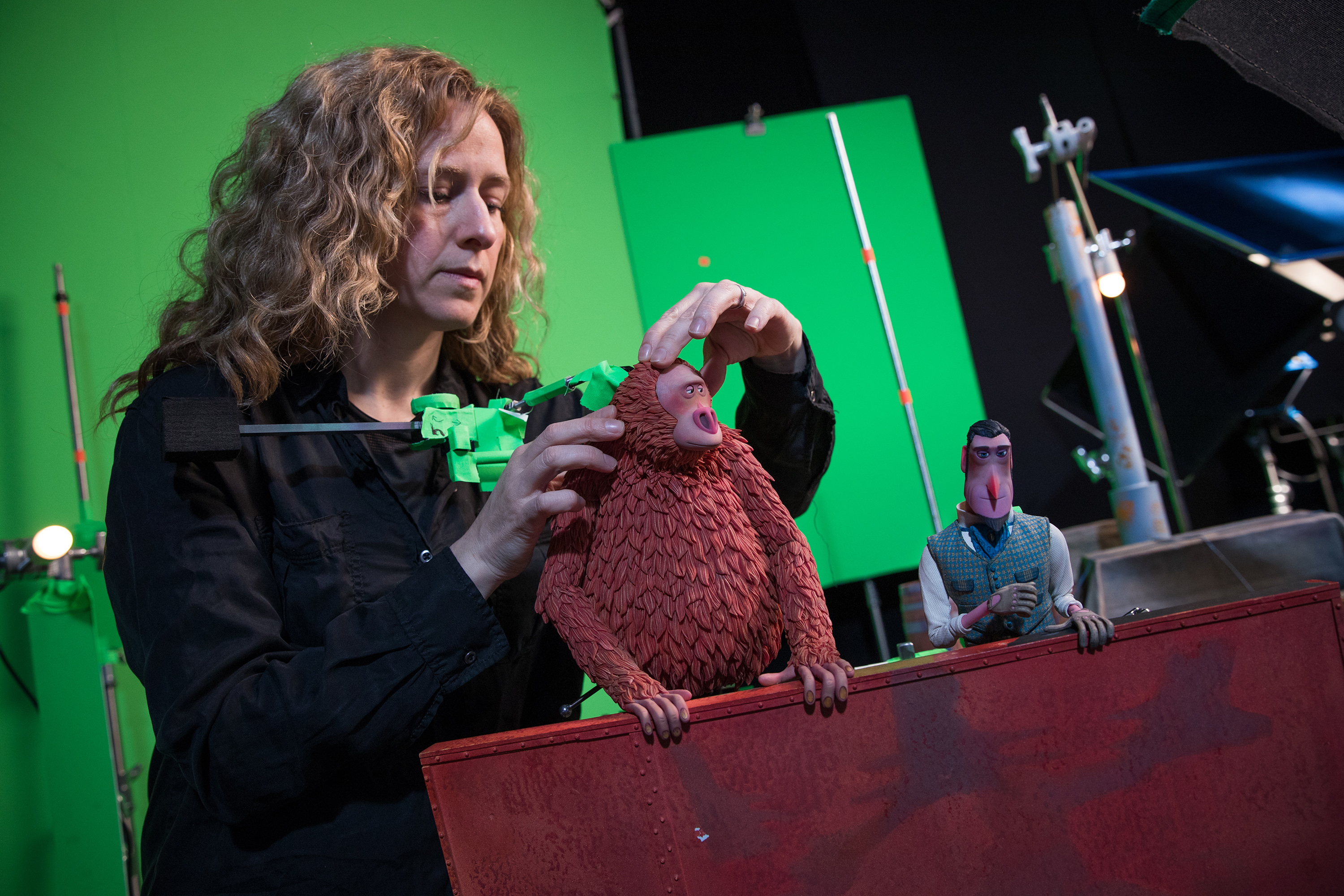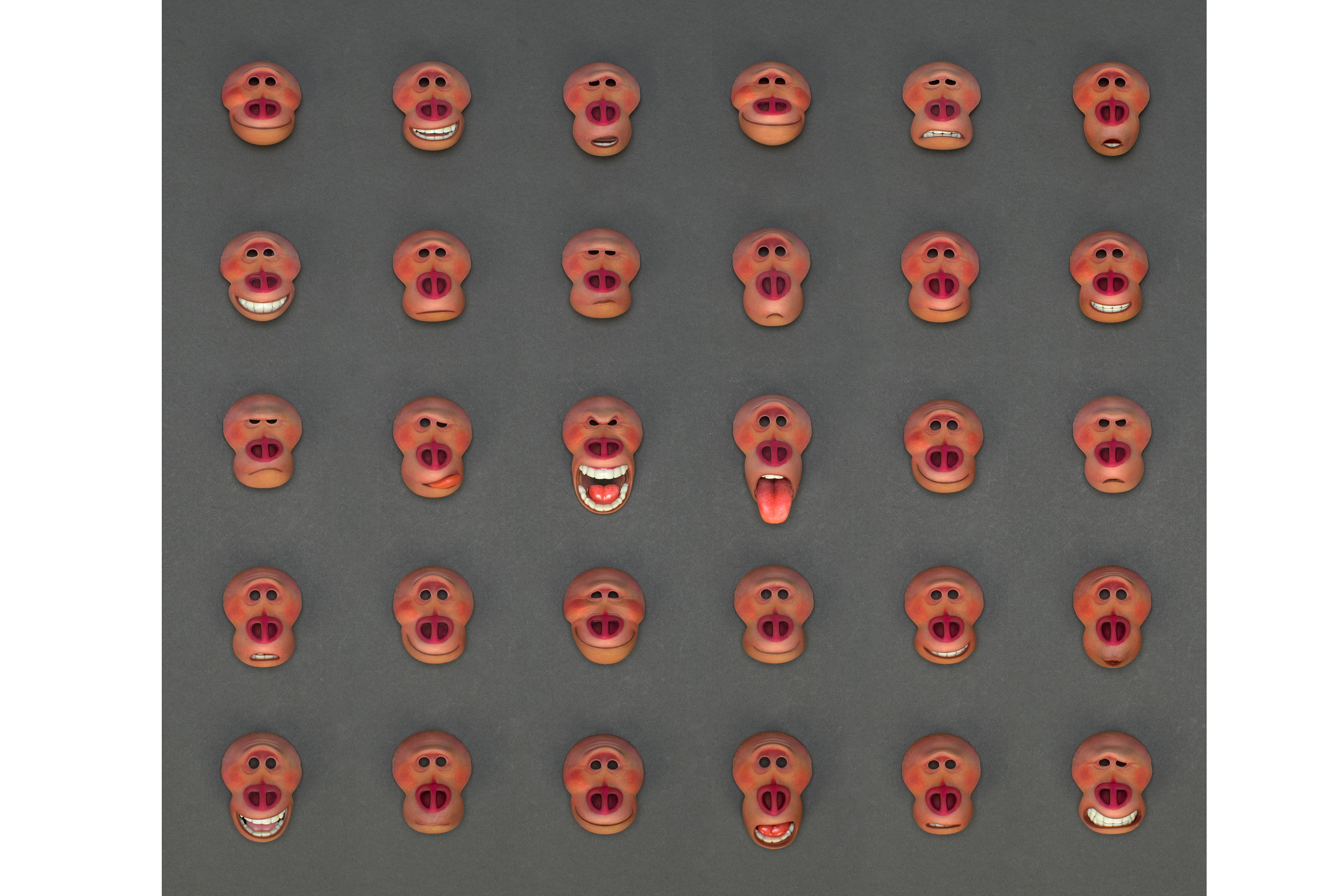Fraunhofer 3D-printing technology impresses animation studio LAIKA
LAIKA’s new stop-motion movie Missing Link features models made using Fraunhofer IGD’s Cuttlefish 3D-printer driver. Film fans can see the results for themselves in cinemas.

(Darmstadt, Germany) LAIKA’s latest animated film Missing Link will be released on April 12th, with theatrical release in Germany to follow in late May. The movie is the animation studio’s fifth stop-motion feature, and the first to make use of the Cuttlefish 3D-printer driver developed by Fraunhofer Institute for Computer Graphics Research IGD. Using this technology, LAIKA has printed a myriad of models, including subtle changes in facial expression for each individual character. The greatest challenge is ensuring that the colors of each model seamlessly match the ones used in previous frames. With this in mind, LAIKA chose Fraunhofer’s patented Cuttlefish technology due to its outstanding color consistency.
High-precision 3D printing brings stop-motion characters to life
In stop-motion animation, each scene is created by carefully setting up elaborate physical models and minimally manipulating them between frames. Photographs are taken after each of these changes – enabling the individual frames to be combined to form a complete motion picture. Playing the series of still images in rapid sequence creates the illusion of movement. 24 frames in combination translate into approximately one second of film. To animate the characters’ facial expressions in Missing Link, LAIKA used a number of Stratasys J750 3D printers, in conjunction with the Cuttlefish 3D-printer driver, to create 106,000 highly detailed color 3D faces. Brian McLean, who was nominated for an Academy Award® for Visual Effects for LAIKA’s Kubo and the Two Strings, is LAIKA’s Director of Rapid Prototype. He has extensive experience in deploying 3D printing for stop-motion animation, and in 2016 received a Scientific and Engineering Oscar® plaque for his pioneering work. “We have used 3D printers for our stop-motion movies since Coraline, LAIKA’s first film, says McLean. “For our current production Missing Link, we leveraged Fraunhofer IGD technologies because they are unrivalled in terms of color consistency and geometric accuracy. The combination of Cuttlefish software and Stratasys J750 hardware has allowed us to produce the most sophisticated colored 3D prints ever.”

Cuttlefish enables accurate 3D printing of colored translucent objects
Cuttlefish is a voxel-based universal printer driver, meaning it can be deployed for diverse 3D output devices. The driver makes it possible to work simultaneously with multiple printing materials. It also enables high fidelity reproduction of the shapes, colors and subtle color transitions of the original, and allows objects to be simulated onscreen prior to printing. In addition, it is now possible to print translucent, i.e., partially to fully transparent, objects. Cuttlefish accounts for the dispersion of light through the object, and changes in hues and surface textures in accordance with incidental light. There are a variety of applications for high-fidelity 3D printing of this type, not just in the film industry, but also in medicine, automotive engineering or cultural heritage, to name a few. The technology plays an increasingly important role in the manufacture of prototypes, end-products and replicas. As 3D printer capabilities expand, such as a growing range of available materials, so do the challenges that software must overcome. Accurately positioning the input material to reproduce geometric and visual attributes requires enormous amounts of data. Against this backdrop, Cuttlefish supports streaming, i.e., processing only the data currently required for printing, minimizing the amount of memory needed. Even highly complex and large 3D models are ready to start printing in a matter of seconds.
Further Information:
- 3D printing at Fraunhofer IGD (igd.fraunhofer.de)
- Website Cuttlefish
- Article about the cooperation with LAIKA in the annual report 2018 (igd.fraunhofer.de)
 Fraunhofer Institute for Computer Graphics Research IGD
Fraunhofer Institute for Computer Graphics Research IGD